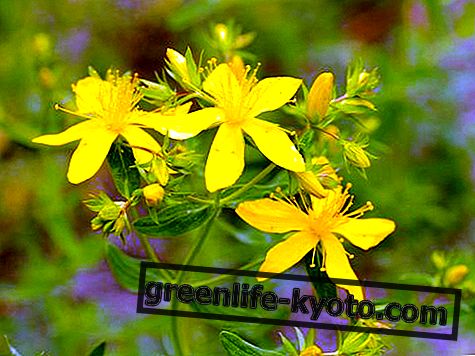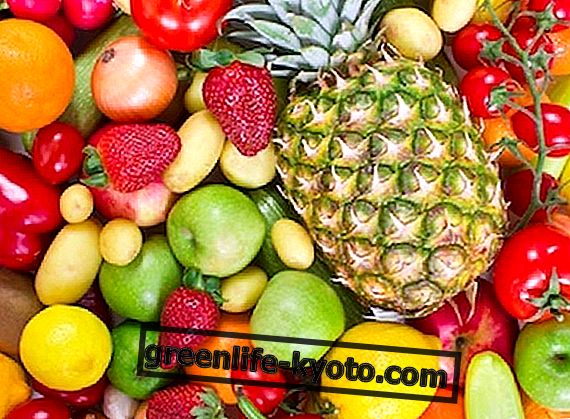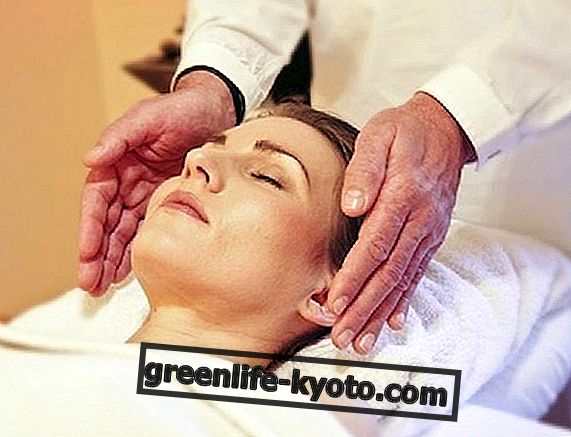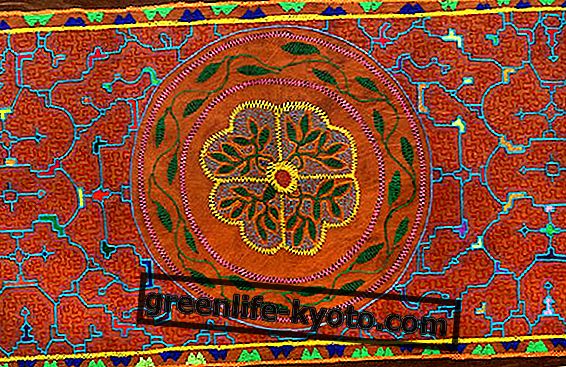Hypericum ( Hypericum perforatum ) is a plant of the Hypericaceae family. Its flowering tops are rich in flavonoids and play an antidepressant and sedative action. Let's find out better.

Properties of hypericum
The therapeutic properties of the flowering tops of the hypericum are due to the phytocomplex essentially represented by flavonoids, such as hypericin, rutin, quercetin and hyperoside, substances with a marked antidepressant and sedative action, which are obtained from dry extract or dyeing mother .
Hypericin, in particular, inhibits two enzymes responsible for the deactivation of various mediators of the central nervous system (serotonin, dopamine, noradrenaline) and increases the nocturnal secretion of melatonin, helping against insomnia. It is also able to increase serum serotonin levels, similar to certain antidepressant drugs, rebalancing mood.
Several tests have shown that hypericum extract limits the reabsorption of two other neuro-receptors called noradrenaline and dopamine which also have an important role in depression, mood swings during the menopause period, seasonal depression and periods of nervous breakdown.
The plant infusion is used in the treatment of inflammatory forms of the bronchi and genitourinary tracts, such as, cough and cystitis, due to the balsamic, antibacterial, anti-catarrhal and anti-inflammatory activity .
Oleolito (obtained by maceration from fresh flowering tops in almond or sunflower oil), with a typical reddish color, has healing and emollient properties and stimulates cell regeneration . For this reason it is used against burns, sunburn, in case of skin blemishes, psoriasis, dry skin on the face and body, skin aging, pressure sores, stretch marks, scars, and signs caused by acne . Of this preparation it could be said that it is a real beauty treatment, and probably one of the most powerful and effective anti-wrinkle and anti-age products that exists in nature.
Method of use
INTERNAL USE:
500-800 mg of dry extract in the form of capsules or tablets in the morning
50 drops of mother tincture with a little water 1-3 times a day for 2 consecutive months. Stop a month and, if necessary, repeat the treatment cycle.
INFUSION : 1 satin spoon with flowering tops of hypericum, 1 cup of water
Pour the mixture of leaves and flowers into the boiling water and turn off the heat. Cover and leave to infuse for 10 min.
Filter the infusion and drink it when needed in case of cough, cold and urinary inflammation
EXTERNAL USE:
Hypericum oil: 70 grams of fresh flowering tops, 250ml of almond oil
Leave to soak for 6 weeks in a well closed bottle, at room temperature, then expose to the sun for a whole day. Filter and store in dark glass bottles, away from light and in a cool place.
It will be enough to apply it every evening on face and neck to be able to see the first anti-wrinkle and anti-aging results, already after only 10 days of application. Or use it at the time of need in case of sores, ulcers, burns.

Contraindications of hypericum
Substantial pharmacological and clinical studies carried out on the plant demonstrate that hypericum is a safe vegetable, but may present some contraindications such as photosensitivity during exposure to sunlight, so during the intake period it is advisable to avoid exposure in the sun and / or tanning lamps.
D decreases the anticoagulant effect of Warfarin and can lower blood levels of Cyclosporine, used against the risk of transplant rejection; reduces the effect of oral contraceptives ; potentiates the effects of synthetic antidepressants ; and it is necessary to stop taking them five days before each surgery. It should not be taken during pregnancy and lactation.
Description of the plant
Plant with short rhizome and erect stem (1 m.), Woody and branched. The leaves are opposite oval or oblong, pattered with tiny transparent glands (containing the essential oil) that in backlight look like small holes and give it the name "perforated". The flowers, of an intense yellow color, are united in a sort of corimbo, they appear in summer; if crumpled they color the skin with red. The whole plant has a pleasant smell.
Properties and use of Hypericum homeopathic remedy
Habitat of hypericum
Very common in dry soils, along the edges of roads, at field edges and in clearings, it grows up to 1600 m of altitude.
Background
Popular superstition often binds to plants that take on extraordinary healing or magical powers in the collective imagination. Hypericum is one of these. Historically its name derives from the Greek hyper-eikon, that is, a plant that grows on old statues. For the Greek doctors Hippocrates and Dioscorides his name would mean " above the world of the underworld ".
More known as devil-hunting grass due to its alleged ability to hunt evil spirits and ghosts, it is also called St. John's Wort . It is said that on the eve of the feast of the same name, to protect oneself from witchcraft spells, it was useful to bring a hypericum plant along with rue, artemisia and garlic. In many European countries on the night of St. John there was the custom of dancing around the fire, encircling the head with its fronds; once the fires were extinguished, they threw them on the roofs of the houses, to protect them from lightning.











